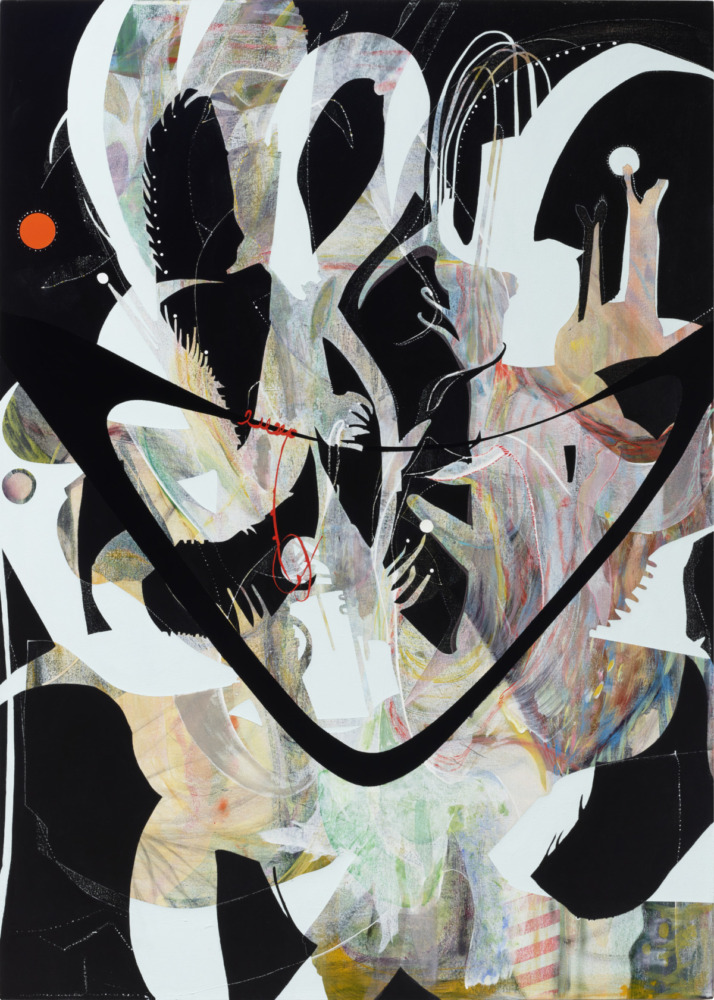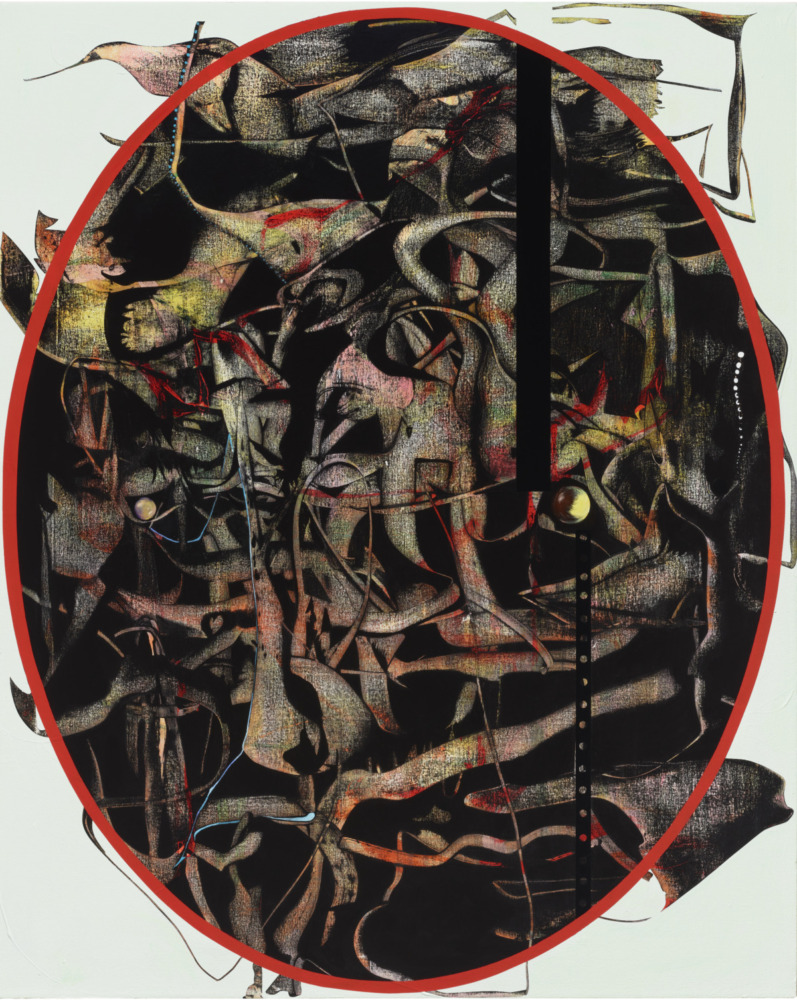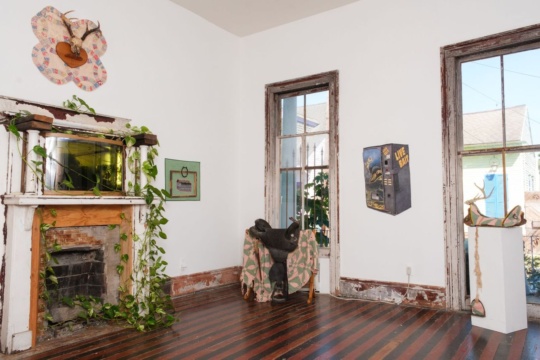
Can flatness live through our century? Much of postwar abstraction benefited from a relationship with the Real that was based on the precondition of a truly flat surface. This surface was distinguished from a coat of paint on a given wall by a philosophical investment in one man’s vision, his heroic perseverance in the face of kitsch and Social Realism, his genius, his name. Some of today’s most effective abstractions recognize this abundance of visual clues and try to work around it by suggesting that non-figurative painting “allows you to rethink yourself in relationship to other people” (Doug Ashford) or “can relate back to signification of the world” (Howardena Pindell). Ana Villagomez chooses another path. She makes pieces that effortlessly integrate clues and give the viewer pointers to as many visual architectures as possible.
Naming the show after a short story by her brother1, Juan Fernando Villagómez, the artist proposes an unstable connection of image to narrative. Unlike the story’s clear-cut event sequence that addresses the hustle of Mexican-Americans in Houston, the paintings are neither Realist nor literal in any way. The grotesque title phrase sets in motion visions of absurd violence and the artist professes attention to Emily Dickinson’s poems and Juan Rulfo’s short stories, yet, there is no overarching narrative. There is no violence in the paintings either. Instead, they reward a gaze that gently sheds the skins the artist has designed for each piece (some of the edges indeed resemble an initial stage of onion peeling). The compositions follow a certain logic. Most of them feature an outline of a frame that fails to contain the shapes within, and a sphere, the natural focal point that sometimes resembles a planet lost in deep space or an animal’s attentive eye. The frames imbue the work with iconicity, inviting us to treat what is within them as recorded apparitions.

Ana Villagomez, In My Garden (A fibrous star), 2023, Acrylic on canvas, 58 x 48 in (147.3 x 121.9 cm).
The paint presents as other textures in order to perform as scotch tape or velvet. Then, suddenly, it comes alive and curls around another shape in a manner of a string of yarn. Heart Sifter (Brain Sitter) (2023) is the show’s most energetic piece. Apart from an animated string, the forms suggest a plethora of creatures, half-real, half-remembered, half-erased, in a state of mutual blending. The central shape of In My Garden (A fibrous star) (2023) could be a vector graphic that spun out of control, but in the middle of it sits a sphere that contains all the painting’s colors, like the universe before the Big Bang. This interplay between the symbolic and the seemingly random is beautifully done and remains the paintings’ strongest feature.
Having grown up in Second Ward, Houston’s Mexican American district, in a family of building contractors, Villagomez is fascinated by the community’s “joy in constantly repurposing things” and the layers of paint on the neighborhood’s walls that contain “a century of past lives.” The painter’s method of unearthing through overlays makes the work glow with suggestive references. The layers of the past are most visible in Xibalba (2023), the darkest painting that combines black and rusty shapes that reminds one of Hieronymus Bosch’s hellish visions. Accordingly, Xibalba is Mayan hell. It’s tonal opposite, Brotherly Resemblance (2023), sports a three-part frame that looks like mirrors on a dressing table. The shapes, painted in the colors of a kid’s bedroom, are fleeting. as if erased. The titular brother might be Willem de Kooning, whose late works became all line while he was possibly suffering from Alzheimer’s, or Robert Rauschenberg, that famous busybody with an eraser at the ready.

Ana Villagomez, Xibalba, 2023, Acrylic on canvas, 52 x 42 in (132.1 x 106.7 cm).
These veterans of the American canon are thrice removed, however, from the structural concerns of other paintings. The closest analogy for the shapes, if not the method, would be Wifredo Lam and Roberto Matta, with their interplay of formal invention against a very real depth, of the Cuban landscape in Lam’s case, and of outer space in Matta’s. When so much of contemporary abstraction is still preoccupied by the enigma of flatness or the battlefield of turbo-charged expression, Villagomez opts for careful reveals of the pre-figurative, deep in the clefts of the personal and artistic past.
1 Juan Fernando Villagómez, “The Dog Had Ate the Hand,” Texas Monthly, https://www.texasmonthly.com/arts-entertainment/the-dog-had-ate-the-hand-short-story/?fbclid=IwAR0sj3QkQUg7-bkO4Tk2G321OactAHRXEuQp0RBNZzAP5t-x2PJPCqkbQhA.




